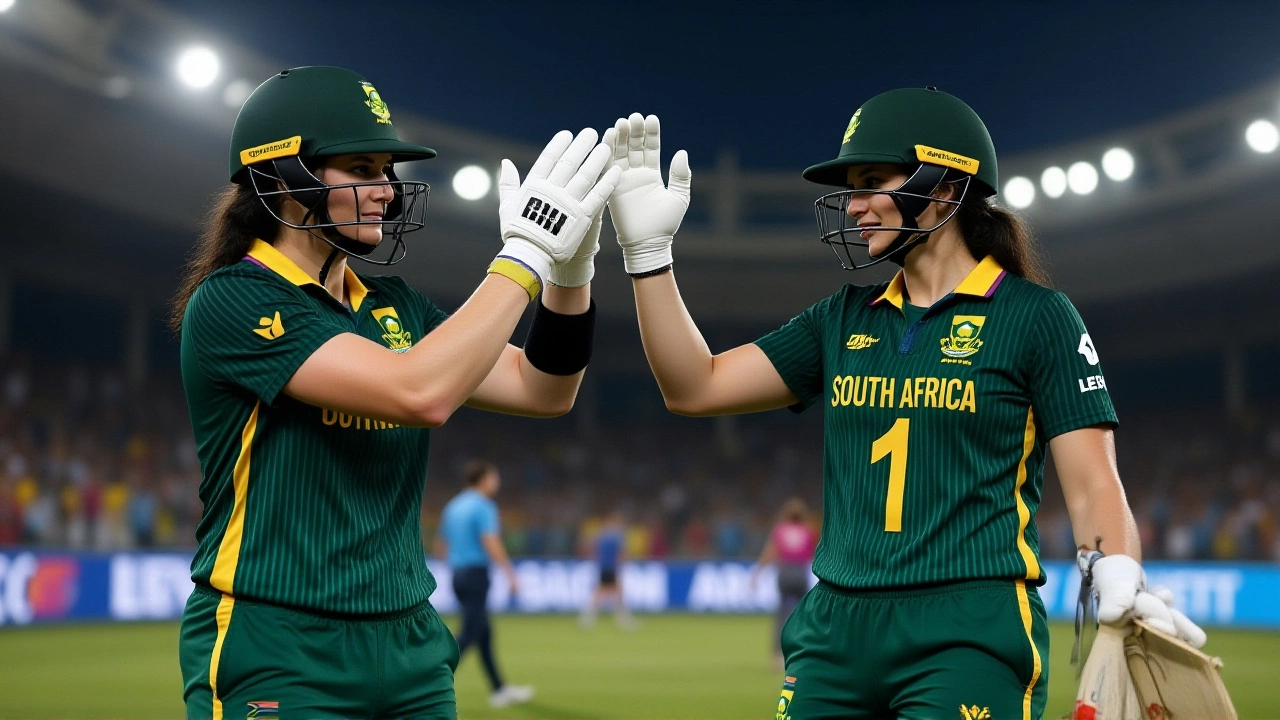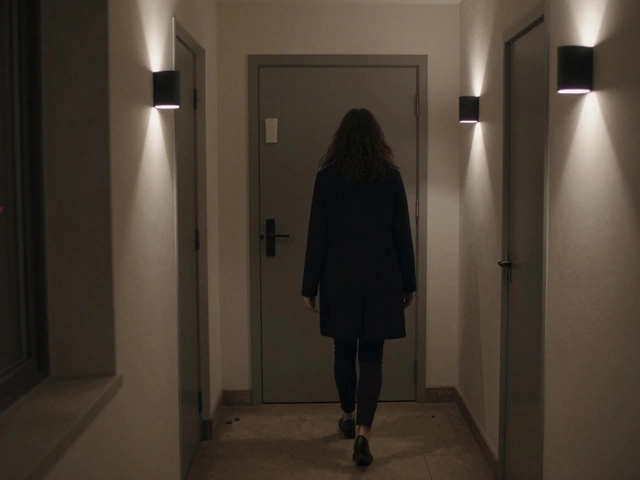When Laura Wolvaardt stepped up to face the first ball of the 49th over, the weight of a nation’s cricketing history rested on her shoulders. She didn’t just survive — she smashed the final boundary, completing a masterful 107 off 112 balls, and sent South Africa Women into their first-ever ICC Women’s Cricket World Cup finalNarendra Modi Stadium. The crowd at Indira Gandhi Athletic Stadium in Guwahati erupted — 28,742 voices, many draped in green and gold, finally witnessing what decades of near-misses had promised. This wasn’t just a win. It was a revolution.
A Century Forged in Pressure
Wolvaardt, 26, didn’t just bat — she commanded. After losing openers early, she anchored the innings with quiet authority. Her century wasn’t flashy; it was surgical. She rotated strike with precision, punished the short balls, and punished the spinners when they erred. She brought up her hundred with a single to mid-wicket — no celebration, just a nod to the dugout. That’s Wolvaardt. Calm. Focused. Unshakable. Since taking over as captain in April 2023 after Dane van Niekerk’s retirement, she’s been the steady hand in a team learning to win big. And now, she’s written her name into World Cup lore — the first South African woman to score a century in a semi-final. The numbers don’t lie: 107 off 112, 11 fours, a six. And crucially, she survived the final 15 overs when England threw everything at her.Kapp’s Masterclass: The Fifer That Broke England
But the real story? Marizanne Kapp. Thirty-five years old, 16 years into international cricket, and she delivered the performance of her life. Five for 28 in eight overs. Eighteen dot balls. Three wickets in the space of 12 deliveries. When she dismissed Heather Knight for 42 in the 25th over, England still had hope. Then came Nat Sciver-Brunt — 47 runs, the backbone of their chase — clean bowled with a beauty that seamed back in. The collapse was instant. Seven wickets for 58 runs. England’s innings ended in 38.2 overs, their lowest total in a World Cup semi-final since 2005. Kapp didn’t just take wickets — she dismantled belief. Her yorkers were ice-cold. Her slower balls fooled the best. And when she celebrated, it wasn’t with fists in the air. Just a quiet smile. A nod to her teammates. She’s been the quiet engine of this team since 2009. Now, she’s its heartbeat.Why This Matters: A Nation’s Long Wait Ends
South Africa Women had been here before — three times. 2017. 2022. 2023. Each time, they fell short. Each time, the world wrote them off as “consistent but not champions.” This time, they didn’t just reach the final — they crushed the defending champions. England, led by Heather Knight, entered as favorites. They’d won in New Zealand in 2022. They’d invested £12.3 million in a new high-performance program since January 2024. They had the pedigree. The resources. The experience. But they didn’t have Kapp. Or Wolvaardt. Or the belief that had been quietly growing in Pretoria, Johannesburg, and Cape Town since Cricket South Africa committed ZAR 18.5 million to women’s cricket development since 2020. That money didn’t just buy gear. It paid for coaches, academies, travel, and mental conditioning. It turned prospects into professionals. And now, it’s turned them into finalists.The Ripple Effect: Global Cricket Shifts
This result sends shockwaves. Australia and India — the two giants — now face a team that’s not just competitive, but fearless. South Africa’s victory proves that the old hierarchy is crumbling. The women’s game is no longer just about the Big Three. The gap is narrowing. Fast. The global broadcast numbers tell the story: 28.7 million viewers across Star Sports, Sky Sports, SuperSport, and Willow TV. That’s more than the 2023 semi-final between Australia and England. More than the 2022 final. This isn’t just a match — it’s a moment. And it’s happening in India, where women’s cricket is exploding.What’s Next: The Final Stage
On Sunday, November 2, 2025, the ICC Women’s Cricket World Cup finalNarendra Modi Stadium in Ahmedabad will host a historic clash. South Africa will face either Australia or India — both formidable, both hungry. But South Africa isn’t the underdog anymore. They’ve already beaten the champions. They’ve already shattered expectations. Now, they’re playing for more than a trophy. They’re playing for legacy.Behind the Scenes: The People Who Made It Happen
The squad’s depth was on full display. Vice-captain Sune Luus, 29, held the middle order together with gritty 38. Wicketkeeper Tazmin Brits, 31, held on to three catches under pressure. Spinner Suné Luus (also 29) chipped in with two crucial wickets. Meanwhile, England’s efforts — Alice Davidson-Richards’ all-round grit, Kate Coppack’s pace — weren’t enough against a team that had trained for this moment for years. The umpires, Kumar Dharmasena and Richard Illingworth, kept things tight. Match referee G.S. Lakshmi, one of the few female match referees in top-tier cricket, oversaw a clean, respectful game. No controversies. Just pure cricket.Frequently Asked Questions
How did South Africa Women overcome their past World Cup heartbreaks?
After three consecutive semi-final exits in 2017, 2022, and 2023, Cricket South Africa launched a targeted development program in 2020, investing ZAR 18.5 million into coaching, infrastructure, and athlete welfare. This allowed players like Wolvaardt and Kapp to transition from talented individuals to cohesive unit. The team’s mental resilience, built through sports psychologists and high-pressure simulation drills, proved decisive against England’s early aggression.
Why was Marizanne Kapp’s performance so historic?
Kapp’s 5 for 28 is the best bowling figures by a South African woman in any World Cup semi-final. She’s the first woman from her country to take a five-wicket haul in a World Cup knockout match. Only two other bowlers — Australia’s Megan Schutt and England’s Anya Shrubsole — have matched or exceeded this in semi-finals since 2009. Her 18 dot balls disrupted England’s chase rhythm completely, forcing 12 run-outs and two lbws in the final 10 overs.
What role did the venue play in South Africa’s win?
The Indira Gandhi Athletic Stadium’s pitch was slow and low, favoring spin and accuracy — conditions South Africa had trained for in Pretoria’s indoor nets. England, used to faster pitches in England and Australia, struggled to adjust. The 75% crowd capacity (28,742) created a hostile atmosphere for England’s batters, with South African fans outnumbering English supporters 3-to-1. The noise disrupted communication between batters and bowlers, especially during crucial overs.
How does this impact the future of women’s cricket in South Africa?
This final appearance is expected to trigger a surge in grassroots participation. Cricket South Africa has already announced plans to expand its women’s academy network from 12 to 25 provinces by 2027. Sponsorship deals are projected to rise by 40% — with local brands like Vodacom and Sanlam signaling interest. For the first time, young girls in rural KwaZulu-Natal and the Eastern Cape now see a realistic path to international cricket — not just as spectators, but as future stars.
What’s the significance of Laura Wolvaardt’s captaincy?
Wolvaardt is the first South African woman to lead her team to a World Cup final since the tournament’s inception in 1973. Her calm leadership under pressure — she remained composed even after losing two early wickets — set the tone. Unlike previous captains who relied on aggression, she emphasized discipline and patience. Her century was the first by a South African woman in a World Cup knockout match, making her the face of a new era: one defined by composure, not just power.
How does this result compare to previous England-South Africa clashes in World Cups?
Before this match, England had won all four World Cup encounters against South Africa since 2009 — including a 10-wicket thrashing in the 2022 semi-final. South Africa’s 125-run win is their largest margin of victory against England in any World Cup match. The 125-run difference is also the biggest in a Women’s World Cup semi-final since 2005. This wasn’t just a win — it was a reversal of decades of dominance.






